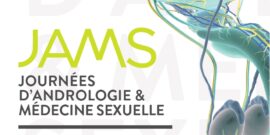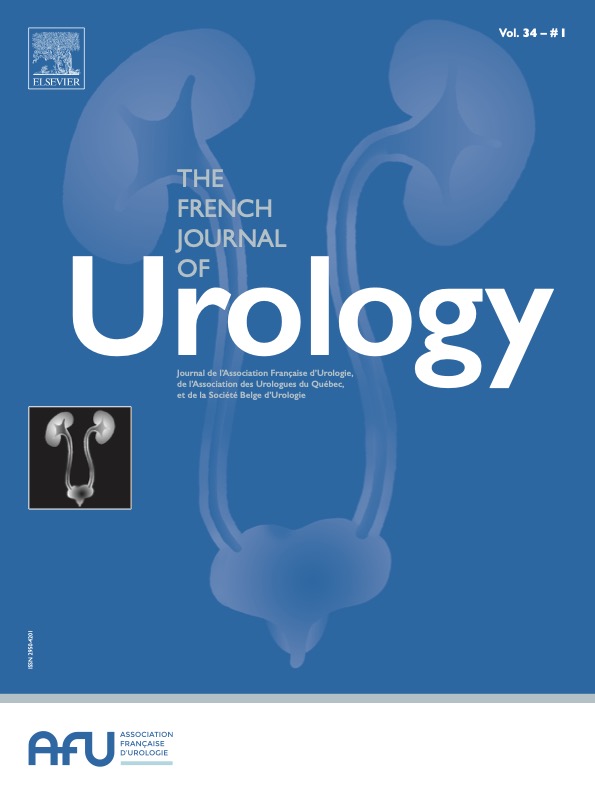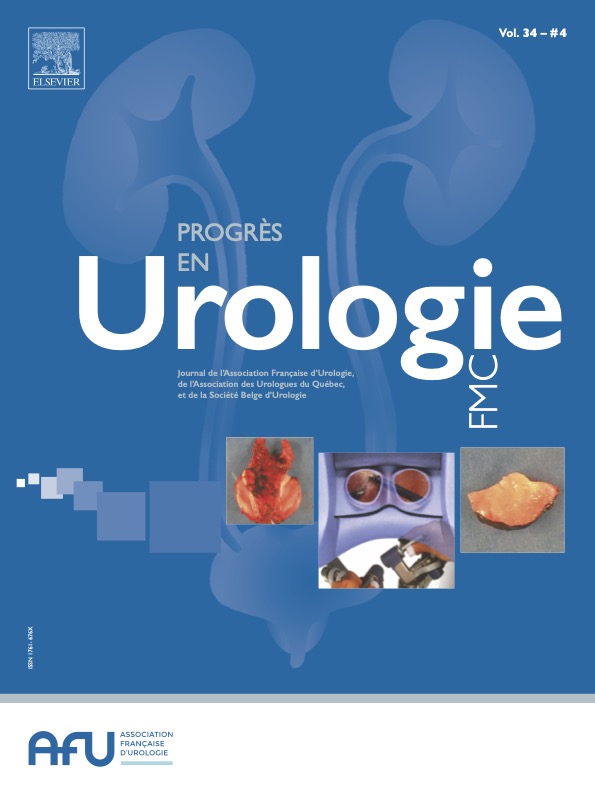The combined percutaneous antegrade and retrograde approach for the treatment of large, complex, staghorn kidney stones was first described by Ibarluzea 2007 and after Scoffone et al. in 2008 under the acronym ECIRS (endoscopic combined intrarenal surgery) [1, 2] and then re-evaluated by other authors [3, 4, 5, 6, 7, 8, 9, 10, 11, 12].
The place of this technique in the European recommendations EAU 2022 is not clearly defined [“There is a consensus that most complex stones, including partial and complete staghorn stones, should be approached primarily with percutaneous nephrolithotomy (PCNL). Additionally, a combined approach with PCNL and retrograde intrarenal surgery may also be an appropriate alternative”] [13].
The primary reason for choosing this combined technique is to limit the number of percutaneous access tracts for the simultaneously treatment of staghorn, or complex kidney stones [2, 4, 14, 15].
Another indication is the simultaneous presence of multiple kidney and ureteral stones or of an impacted pelvic stone [5]. The combination of the two techniques can decrease the retreatment rate of complex stones [4, 6, 14, 15].
When retrograde visual access to the renal papilla to be punctured is possible, the safety of the puncture in the axis of the papilla is increased, and consequently the risk of bleeding is decreased and tract dilatation can be visually monitored while reducing irradiation [4]. However, this technical aspect is not reproducible for each combined procedure [15].
The Galdakao-Modified Supine Valdivia (GMSV) position [1] allows the retrograde and antegrade access without need of turning the patient [2, 4, 8, 9]. This is probably the most commonly used position in France, but the prone split-leg position also is possible [10].
Miniaturized PCNL (mini-PCNL) can be used in the combined approach. The two recent meta-analyses selected a majority of studies performed by mini-PCNL with an access sheath diameter≤20 CH [14, 15].
|
| Efficacy of the combined approach |
The first meta-analysis (4 retrospective studies and 1 randomized trial [3]) showed that ECIRS was associated with higher stone-free rate compared with PCNL alone (OR: 4.20; 95% CI [2.79–6.33]; P <0.00001), fewer complications (OR: 0.63; 95% CI [0.41–0.97]; P =0.04), and shorter hospital stay (weighted mean difference: −1.27; 95% CI [−1.55 to −0.98]; P <0.00001) compared with PCNL. There was no statistically significant difference in bleeding (standardized mean difference: −1.10; 95% CI [−2.46 to 0.26]; P =0.11), need of transfusion (OR: 0.45; 95% CI [0.12–1.68]; P =0.24), and intervention duration (standardized mean difference: −1.05; 95% CI [−2.42 to 0.31]; P =0.13) between ECIRS and PCNL [14].
The second meta-analysis (17 retrospective studies) found a significantly lower bleeding rate in the ECIRS group (mean difference: −0.56g/dL; 95% CI [−1.08 to −0.05]; P =0.03), while blood transfusion rate did not differ between groups (OR: 0.88; 95% CI [0.64–1.23]; P =0.15). There was no significant difference in intervention duration and mean hospital stay between groups (OR −8.39minutes: 95% CI [−21.30 to 4.53]; P =0.20; 5.09 days; 95% CI [19.51–29.69]; P =0.69). The incidence of postoperative sepsis did not differ between groups (OR: 0.52; 95% CI [0.17–1.59]; P =0.25), but the incidence of postoperative fever was lower in the ECIRS group (not significant) (OR: 0.61; 95% CI [0.35–1.06]; P =0.08). The stone-free rate was significantly higher in the PCNL group (OR: 2.52; 95% CI [1.64–3.90]; P <0.0001) and retreatment rate was lower in the ECIRS group (OR: 0.34; 95% CI [0.14–0.87]; P =0.002) [15].
Recommendation Table 1
Le double abord antégrade percutané et rétrograde, ou abord combiné, pour le traitement des calculs volumineux, complexes et coralliformes du rein a été décrit par Scoffone et al. en 2008 sous l’acronyme ECIRS (Endoscopic Combined IntraRenal Surgery ) [1, 2] et ré-évalué par d’autres auteurs [3, 4, 5, 6, 7, 8, 9, 10, 11, 12].
La place de cette technique dans les recommandations européennes EAU 2022, n’est pas clairement définie (« There is a consensus that most complex stones, including partial and complete staghorn stones, should be approached primarily with PNL. Additionally, a combined approach with PNL and RIRS may also be an appropriate alternative ») [13].
La motivation première du choix de cette technique combinée est de limiter le nombre d’accès percutanés pour le traitement des calculs coralliformes, ou complexes du rein par un traitement simultané [2, 4, 14, 15].
Une autre indication est la présence simultanée de plusieurs calculs rénaux et urétéraux ou d’un calcul lombaire impacté [5]. La combinaison des deux techniques permet de diminuer le taux de retraitement des calculs complexes [4, 6, 14, 15].
Dans le cas où l’accès visuel rétrograde de la papille rénale à ponctionner est possible, la sécurité de la ponction dans l’axe de la papille est augmentée ce qui diminue le risque de saignement et permet un contrôle visuel de la dilatation pariéto-rénale en réduisant l’irradiation [4]. Cependant cet aspect technique n’est pas reproductible pour chaque intervention combinée [15].
L’installation en position Valdivia Modifiée en décubitus dorsal (Supine) selon Galdakao (GMSV) permet un accès rétrograde et antégrade sans manœuvre de retournement [2, 4, 8, 9]. C’est probablement la plus utilisée en France, mais une installation en décubitus ventral (prone split-leg ) est possible [10].
La miniaturisation de la technique de NLPC par la mini-NLPC est reproductible pour la voie combinée. Les deux méta-analyses récentes ont sélectionné une majorité d’études réalisées par mini-NLPC avec un diamètre de gaine d’accès≤Ch 20 [14, 15].
|
| Efficacité de la voie combinée |
La première méta-analyse (4 études rétrospectives et 1 essai randomisé [3]) a montré que l’ECIRS était associée à un taux de SFR plus élevé par rapport à la NLPC seule (OR : 4,20 ; IC95 % [2,79–6,33] ; p <0,00001), moins de complications (OR : 0,63 ; IC95 % [0,41–0,97] ; p =0,04) et une durée d’hospitalisation plus courte (DMP : −1,27 ; IC95 % [−1,55 à −0,98] ; p <0,00001) par rapport à la NLPC. Il n’y avait pas de différence statistiquement significative concernant le saignement (DMS : −1,10 ; IC95 % [−2,46 à 0,26] ; p =0,11), la nécessité de transfusion (OR : 0,45 ; IC95 % [0,12–1,68] ; p =0,24), ou la durée opératoire (SMD : −1,05 ; IC95 % [−2,42 à 0,31] ; p =0,13), ou entre l’ECIRS et la NLPC [14].
La 2e méta-analyse (17 études rétrospectives) a montré un taux de saignement significativement plus faible dans le groupe ECIRS (DM : −0,56g/dL ; IC95 % [−1,08 à −0,05] ; p =0,03), tandis que le taux de transfusion sanguine ne différait pas entre les deux groupes (OR : 0,88 ; IC95 % [0,64–1,23] ; p =0,15). Il n’existait pas de différence significative concernant la durée opératoire et la durée d’hospitalisation moyenne dans les groupes (DM : −8,39 minutes ; IC95 % [−21,30 à 4,53] ; p =0,20 ; 5,09 jours ; IC95 % [19,51–29,69] ; p =0,69). Alors que l’incidence de la septicémie postopératoire ne différait pas entre les deux groupes (OR : 0,52 ; IC95 % [0,17–1,59] ; p =0,25), l’incidence de la fièvre postopératoire était plus faible dans le groupe ECIRS mais la différence n’était pas significative (OR : 0,61 ; IC95 % [0,35–1,06] ; p =0,08). Le résultat SFR était significativement plus élevé dans le groupe NLPC (OR : 2,52 ; IC95 % [1,64–3,90] ; p <0,0001) et le taux de retraitement était plus faible dans le groupe ECIRS (OR : 0,34 ; IC95 % [0,14–0,87] ; p =0,002) [15].
Tableau de recommandations 1
The authors declare that they have no competing interest.









